Image: Simon Croft/Hotpencil Press
Serge Nicholson, Sex and Relationship Therapist, on how trans and non-binary people can talk about their bodies when the traditional terms don’t fit, and ways to add gender diversity to traditional sex toy marketing.
Before I retrained as a sex and relationship therapist I was an occasional writer/editor/producer of trans arts performance. In 2009, I collaborated with my good friend Laura Bridgeman on a theatre piece and hotpencil press publication about trans masculine life called ‘There Is No Word For It’.
We recruited 12 trans guy contributors and explored their individual stories of sex and sexuality, from trans masculine childhood to manhood. Our touring performance and accompanying book allowed trans guys to open up, talk freely about the unmentionable, and even make an attempt to create a new language for their original plumbing and HRT- and surgically-enhanced bodies.
What to call our genitals? In a clinical setting, doctors tend to use medical language for our trans and non-binary bodies, using assigned-at-birth terms that are penis- or vulva-centred. This can be jarring. But in everyday life there are possibilities for bringing in our own terms that can be more comfortable and affirming to us as gender diverse people with diverse bodies, and as trans women and trans men comfortable with binary terms but with different needs.
As part of ‘There Is No Word For It’, we performed a collective group monologue on some of the terms we used for our trans guy genitalia:
‘His Nibs
My treasure chest
Man cunt
My Vault
My Mangina
My capacious tunnel of love
Monster
Chocho’
As you can see, we shared a hunger for new language and for greater representation of us as trans masculine and gender diverse people, as sexual and sexy.
Gender diversity in the traditional world of sex toy marketing
That was 10 years ago, and since then the mainstream has (albeit very slowly) started to wake up to the fact that not everyone is cisgender, not everyone with a penis is a man, not everyone with a vagina is a woman, and that some people don’t like to use those terms for their bodies at all. So when I was approached by Hot Octopuss for gender diversity consultancy I was intrigued to rush to look at their website and products, and to see how could I perhaps assist them to gender diversify the traditional world of gendered sex toy product marketing.
At cliniQ, London’s trans-led drop-in sexual health service, patients can use their own choice of terms for their genitals. As trans people we have a long history of a focus that is over-medicalised, and we do not often expect to be offered the space to talk about taking pleasure in our bodies, so at cliniQ we cover this as well as the more traditional sexual health issues. We should be able to confidently voice our concerns, our wishes, and expectations, and to seek to increase our enjoyment of sexual pleasure, and our confidence as lovers.
To Hot Octopuss we at cliniQ suggested expanding the range of terms used on their website to describe sex toys and bodies, leaving space for customers not only to choose which terms worked for them, but potentially to enter into conversations with them about further language options. It’s not about shutting down language, it’s about opening it up. We also looked specifically at Hot Octopuss’s product range and how this could work for trans and non-binary people at different stages of transition, and how this information could best be expressed on their website.
Exploring sexuality as a trans or non-binary person
As a therapist I regularly incorporate a sex education element in my work, and I raise the potential benefits of self-pleasure and the exploration of the use of sex toys, dilators, vibrators, cock rings, and lubricants. For this reason, it is joyous to see Hot Octopuss making a callout specifically seeking trans and non-binary sex toy product testers.
As a young buck genderqueer trans man I would have absolutely loved to have had the opportunity to be a sex toy product tester! Quality robust sex toys like ATOM and ATOM PLUS, adaptable for imaginative use on my trans body, I would have welcomed as a trans teen, with my genital growth spurts, when my ‘original plumbing’ became enhanced with HRT, or later on at the times between surgical procedures, when I did not always want to share my new genital work in progress with others. I had in my past thought of sex toys for solo sex use only, but I now see the value of them as partner toys too, especially in my case, post-phalloplasty, with the pleasing aesthetic design and the powerful dual vibration aspect of ATOM PLUS.
This first consultation with Hot Octopuss was the start of a very interesting dialogue, on gender diversity in language, the needs of diverse bodies, the demand for increased representation of trans and non-binary people, and the huge potential for reaching out to a trans and non-binary community interested in sex toy sexual pleasure. Hot Octopuss are genuinely interested in our experiences as valued gender diverse customers. The Hot Octopuss website option for a binary or a non-binary text button I feel is truly inspired. I look forward to seeing where this conversation takes us and the sex toy industry as a whole.
Serge Nicholson is a Sex and Relationship Therapist who works with Gender, Sexual & Relationship Diverse Clients (GSRD is an initialism for the broad ranging spectrum of all genders, all sexualities and all relationship models).
London-based cliniQ aims to offer a queer inclusive and non-judgemental holistic well-being and sexual health service to trans clients, members of the trans community, their friends and families.

